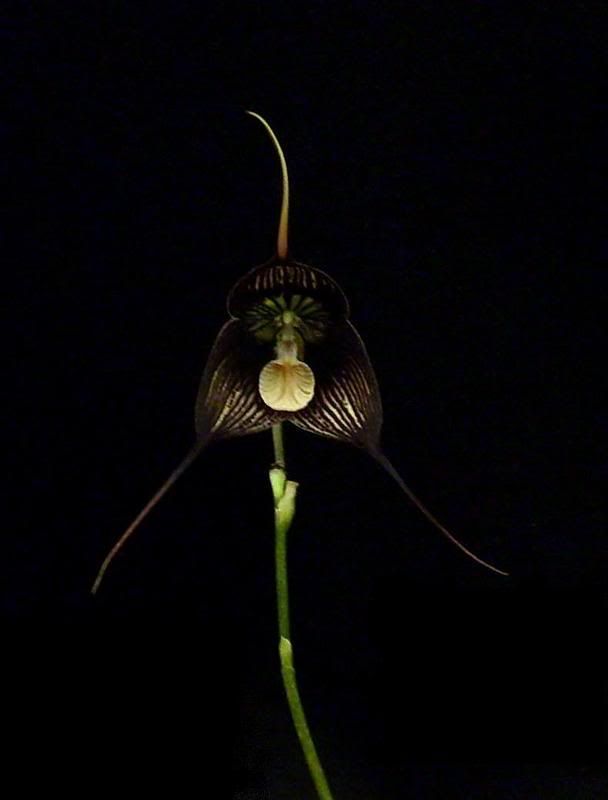I decided a while back (July?) to see what it takes to bloom a
Dracula in outside Florida weather.
Dracula species are typically native to high elevations where the humidity is very high, but the temperature is cool.
One of the
Dracula species I have much of is
Dracula vampira, so I decided to use a piece of it for the "experiment". This high elevation species is native to Mt. Pichincha, which is outside of Quito, Ecuador.
Dracula vampira can be found at about a 2,000m elevation.
The division of
Dracula vampira has been in outside Florida the entire time through the summer, fall, and now winter, without being moved to protect it from the heat or cold. Here is what I found to keep it alive... first, the plant needs plenty of available water, or water that can be pulled up or taken when needed. This can be easily supplemented by a small pot saucer. Second; little amount of light. Most higher elevation
Dracula species like to be shaded out, and cannot tolerate higher amounts of light. Third is air circulation. This can be supplemented by a small fan working during the day, and shut off at night.
Thinking that
Dracula comes from rather cooler weather, it would need these cold temperatures to grow, bloom, or even live. This is not true, but these conditions are more suitable for
Dracula. If a person were to have over 50 Pleurothallids, it would be better to make an encasement of some kind to grow them (like a terrarium or coolhouse). If a person had a small collection of high elevation Pleurothallids, the simple way of growing outdoors is more practical.
Here's a picture of the
Dracula vampira blooming outside today. Typically, when a
Dracula is pulled from a coolhouse, the flowers will sag in about a minute. Here, the plant has supplemented conditions, where the temperature is warm, but the flowers are fine. Maybe the plant is accustomed to the warmth too?

(not the best picture, it's really hard to photograph Pleurothallids

)

-Pat






































 Linear Mode
Linear Mode

